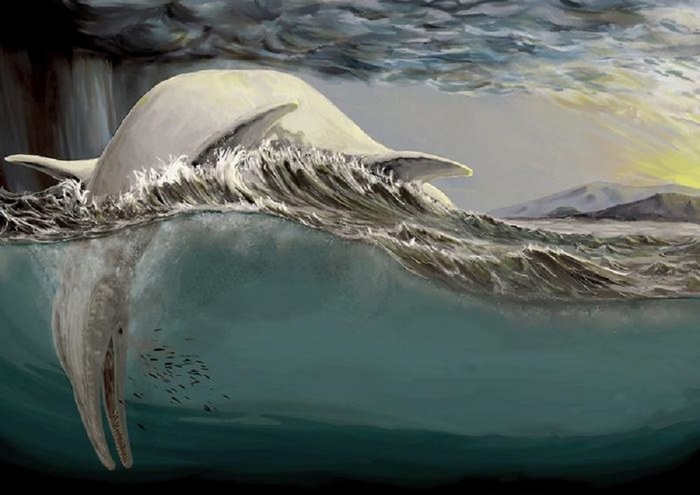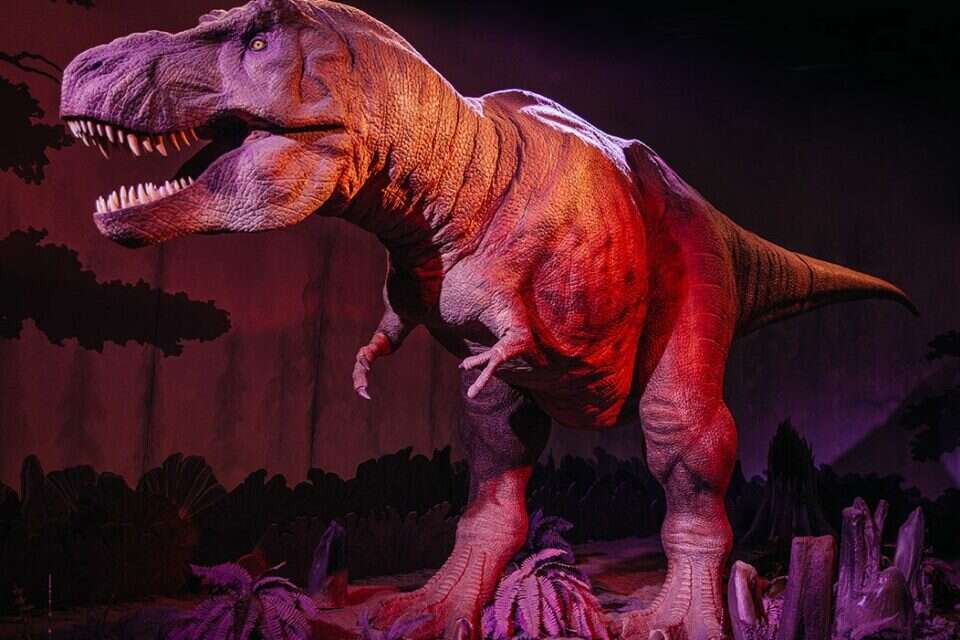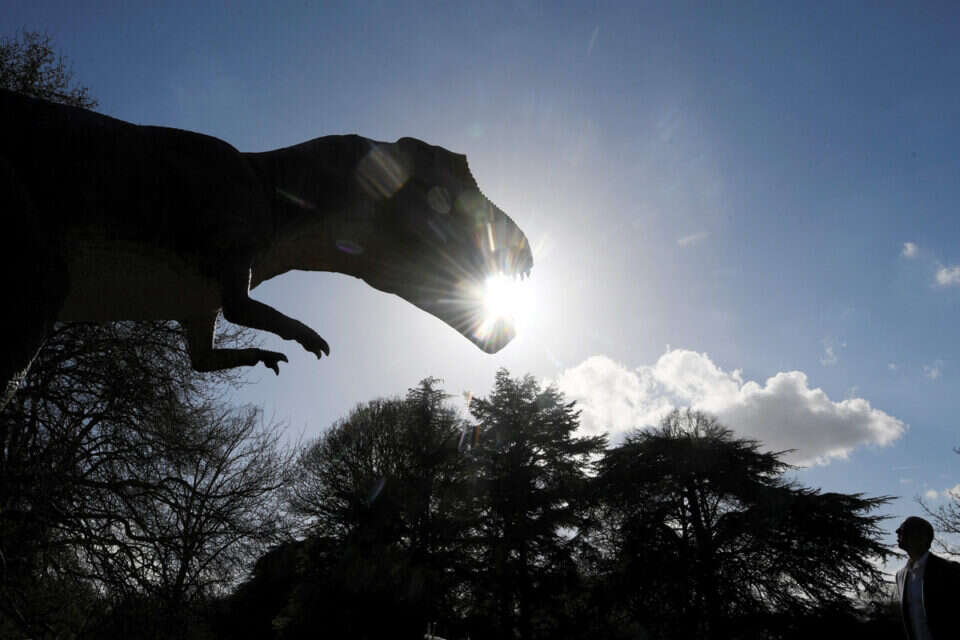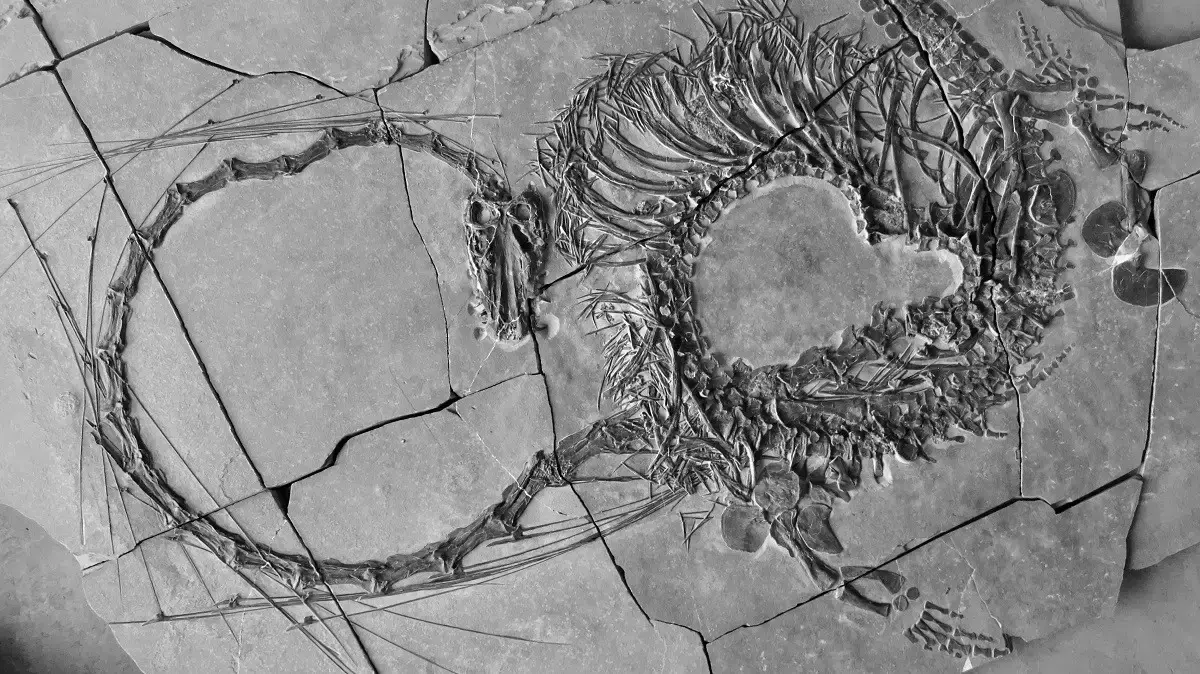Remains of giant marine dinosaurs found in the Alps
Created: 04/29/2022, 21:30
By: Martina Lippl
The first fish dinosaurs (technically: ichthyosaurs) swam through the primeval oceans around 250 million years ago in the early Triassic period.
© Marcello Perillo/ University of Bonn
Fossils were discovered decades ago in the Swiss Alps.
Now researchers are amazed: they are relics of the largest fish dinosaurs that have ever lived.
Bonn/Zurich – There are traces of times long past.
More than 30 years ago, a research team in the canton of Graubünden discovered, among other things, a tooth, a vertebra and ribs at an altitude of 2,800 meters.
The fossils came from the first fish dinosaurs (ichthyosaurs) that swam through the primordial oceans more than 205 million years ago.
The petrified bones have been somewhat forgotten.
But now the pieces are apparently turning out to be a real sensation.
Giants of the primordial oceans: Remains of giant marine dinosaurs found in the Alps
It could be the remains of the largest ichthyosaurs that have ever lived, as the team led by Tanja Wintrich from the University of Bonn writes in the journal Journal of Vertebrate Paleontology.
The relics come from primeval giants with gigantic shapes.
"Recently, however, further remains of giant ichthyosaurs have appeared," explains Prof. Dr.
Martin Sander from the Palaeontology department of the Institute for Geosciences at the University of Bonn.
"Therefore, it seemed worthwhile to us to analyze the Swiss finds again in more detail."
The fossils turned out to be from three different animals.
A vertebra survives from one of the ichthyosaurs, along with ten fragments of ribs.
Their sizes suggest that the reptile was probably 20 meters long, the scientist said.
In contrast, only a row of vertebrae was excavated from a second fish dinosaur.
The comparison to better preserved skeletal finds suggests a length of about 15 meters.
ichthyosaurs
The first fish dinosaurs (technically: ichthyosaurs) swam through the primeval oceans around 250 million years ago in the early Triassic period.
They had an elongated body and a relatively small head.
Ichthyosaur tooth with a diameter of six centimeters
"From our point of view, the tooth is particularly exciting," emphasizes Sander.
"Because it's huge by Fischsaurier standards."
The root of its tooth is six centimeters in diameter.
"The largest specimen preserved in a complete skull so far was 20 millimeters and comes from an ichthyosaur that was almost 18 meters long."
The Bonn paleontologist Martin Sander admits that the tooth diameter does not directly indicate the length of its owner.
"Nevertheless, the find naturally raises questions." Because research has so far actually assumed that extreme gigantism and a predatory lifestyle (which requires teeth) cannot be reconciled.
The root of the found tooth has a diameter of six centimeters.
It is by far the thickest fish dinosaur tooth found so far.
© Rosi Roth/University of Zurich
The largest animal of the present time - the blue whale (up to 30 meters long and 150 tons heavy) - is toothless, says the researcher.
The tooth-bearing sperm whale, on the other hand, is only 20 meters and weighs 50 tons.
Because marine predators burn most of their calories on their muscles, Sander says they probably can't get any bigger than a sperm whale.
Were the eating habits of the giant marine dinosaurs different?
Or, does the tooth possibly come from a fish dinosaur with particularly gigantic teeth?
So there are still many mysteries to be solved.
Sander hopes: "Maybe there are more remains of the giant sea creatures slumbering under the glaciers."
(ml)
The Tyrannosaurus rex - T. rex - is famous and notorious.
His short arms sometimes cause ridicule.
US researchers recently put forward an amazing hypothesis about the short extremities.







/cloudfront-eu-central-1.images.arcpublishing.com/prisa/XK5OFMM65VG2ZKWHWFQNQ3A6OY.jpg)

/cloudfront-eu-central-1.images.arcpublishing.com/prisa/DGAXPTVHVNGTDKDEMOMYHMEFHI.jpg)